Do Butterflies Pee on You? Unveiling the Truth!
Butterflies don’t actually pee on you. They lack a urinary system and kidneys. Instead, they expel excess water and waste as part of their efficient excretion syste.
Through Malpighian tubules, butterflies convert waste into uric acid and expel it alongside feces as semi-solid waste. Sometimes, butterflies release a liquid, which is mostly water and not urine, after absorbing water or nutrients.
Post-emergence, they might expel meconium, a waste product consisting of metabolic waste. If you’re curious about the intricacies of their excretion process and behaviors, there’s plenty more fascinating information to explore.
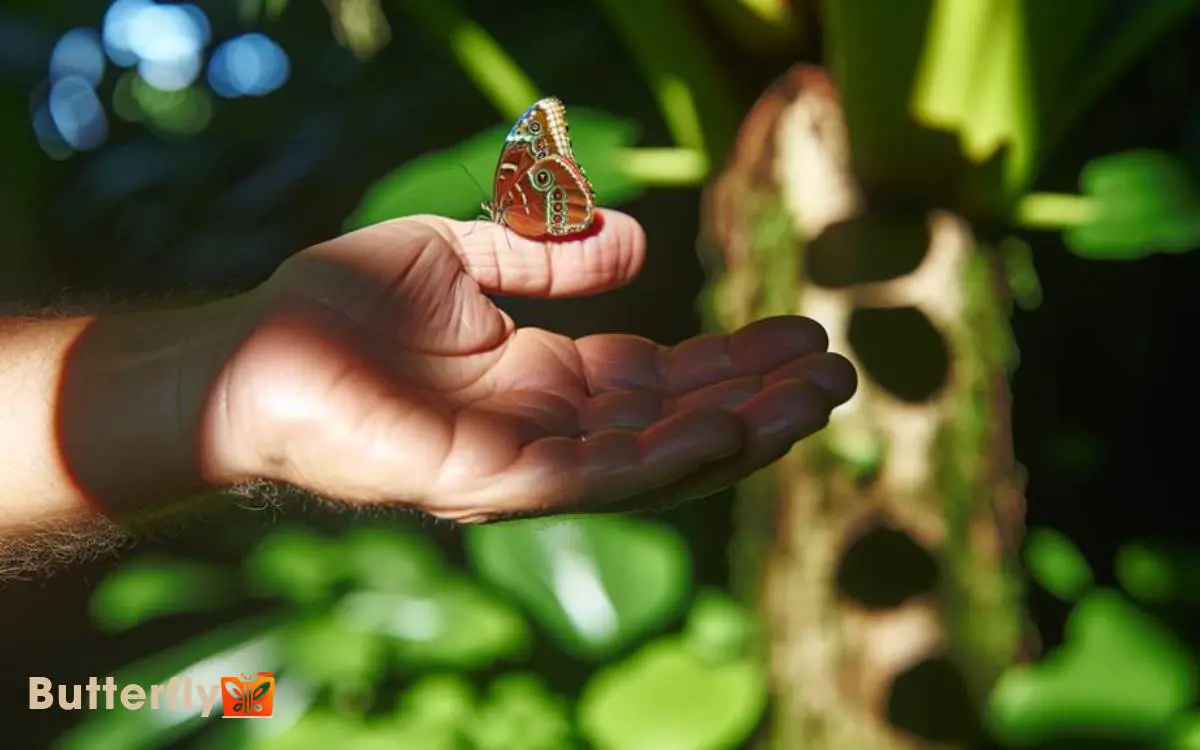
Key Takeaways
Butterfly Anatomy
Understanding butterfly anatomy is essential for unraveling the mysteries of their behavior and physiological processes. By studying their delicate wings, compound eyes, and unique feeding mechanisms, researchers can gain valuable insights into their survival strategies. One fascinating aspect is butterflies and their tongues, as these insects use a specialized proboscis to sip nectar from flowers. This long, flexible tube uncoils to access food and then coils back when not in use, demonstrating an incredible adaptation for feeding.
You’ll find that a butterfly’s body is divided into three main parts: the head, thorax, and abdomen. The head houses sensory organs like compound eyes, antennae, and mouthparts, such as the proboscis, which they use for feeding.
The thorax is responsible for locomotion, containing three pairs of legs and two pairs of wings, each intricately veined for structural support.
The abdomen contains the digestive and reproductive systems. Butterflies also have a tracheal system for respiration, consisting of a network of tubes that distribute oxygen directly to tissues.
Do Butterflies Pee?
Examining the excretory processes of butterflies reveals that these insects don’t pee in the same way mammals do. Butterflies lack kidneys and a urinary system like mammals. Instead, they use Malpighian tubules to filter waste from their hemolymph (insect blood).
The waste, primarily uric acid, is converted into solid or semi-solid form to conserve water. This semi-solid waste is then excreted along with their feces.
Occasionally, butterflies engage in a behavior called ‘puddling,’ where they absorb water and minerals from damp surfaces.
Any excess water consumed is excreted quickly, which might appear like ‘peeing.’ However, it’s important to note that this liquid isn’t urine but rather excess water expelled for hydration balance.
Understanding Butterfly Excretion
To fully grasp how butterflies manage their excretion, it’s useful to explore the role of Malpighian tubules and their efficiency in conserving water while filtering waste.
These specialized structures function similarly to kidneys in mammals. They filter nitrogenous waste from the hemolymph, which is the insect equivalent of blood.
Malpighian tubules efficiently convert waste into uric acid, a less toxic and water-insoluble compound. This helps butterflies minimize water loss, essential for their survival.
The filtered waste is then excreted as a semi-solid alongside feces. Understanding this process clarifies that butterflies don’t urinate in a liquid form but instead manage waste through a highly efficient system, balancing hydration and detoxification.
What Is Meconium?
You might be curious about meconium in butterflies, which is a waste product expelled after they emerge from their chrysalises.
This substance consists of leftover materials from their metamorphosis, including metabolic byproducts and unneeded pigments.
Meconium plays a vital role in helping butterflies rid their bodies of these residual elements to start their adult phase cleanly.
Meconium in Butterflies
Meconium is the waste material expelled by butterflies shortly after they emerge from their chrysalises. When a butterfly first emerges, it needs to rid its body of this leftover metabolic waste to make sure it starts its adult life with a clean system.
This substance is often a reddish or brownish liquid that can sometimes be mistaken for blood or another bodily fluid.
| Feature | Description |
|---|---|
| Color | Reddish or brownish |
| Timing | Shortly after emergence |
| Consistency | Liquid |
| Purpose | Expel metabolic waste |
| Significance | Indicates butterfly’s change |
You might observe this expulsion if you’re watching butterflies closely. Understanding meconium helps you appreciate the complex life cycle of these delicate insects and dispels misconceptions about their bodily functions.
Meconium’s Composition Explained
Comprising mostly of metabolic waste products, meconium in butterflies is a fascinating yet often misunderstood substance.
When a butterfly emerges from its chrysalis, it releases this reddish-brown liquid. Meconium consists of waste materials accumulated during the pupal stage.
These include uric acid, a byproduct of protein metabolism, and other nitrogenous compounds that the developing butterfly can’t utilize. It also contains pigments, remnants of the pupal casing, and other cellular debris.
This mixture may seem peculiar, but it serves as an essential purge for the butterfly, ensuring that it starts its adult life free from the metabolic detritus accumulated during metamorphosis.
Understanding meconium’s composition helps demystify this necessary aspect of a butterfly’s developmental process.
Meconium’s Role Post-Emergence
When a butterfly emerges from its chrysalis, it expels meconium to clear out metabolic waste accumulated during its pupal stage, ensuring a fresh start for its adult life.
Meconium is a reddish-brown liquid composed of waste products like uric acid, pigments, and other byproducts.
| Component | Description |
|---|---|
| Uric Acid | Primary waste product |
| Pigments | Contributes to the reddish-brown color |
| Byproducts | Metabolic waste from the pupal stage |
This process is essential because it allows the butterfly to rid itself of unnecessary substances, facilitating its growth and survival.
You might mistake this expulsion for ‘peeing,’ but it’s a normal, healthy part of the butterfly’s development. Understanding meconium’s role can help you better appreciate the complexities of butterfly metamorphosis.
The Role of Liquid Waste
When butterflies excrete liquid waste, it’s a combination of water and metabolic byproducts. This waste, primarily uric acid, is harmless to humans.
Understanding this process helps you see that any liquid you feel isn’t harmful or significant.
Butterfly Excretion Process
The butterfly excretion process involves the release of liquid waste through a specialized structure called the Malpighian tubules. These tubules filter waste products from the butterfly’s hemolymph, which is analogous to blood in vertebrates.
The filtered waste is then transported to the hindgut, where it combines with digestive waste before being expelled from the body. This liquid waste helps regulate the butterfly’s internal balance of salts and water, essential for maintaining homeostasis.
When you observe a butterfly expelling liquid, it’s part of this essential excretion process. This liquid isn’t urine in the human sense but is a mix of metabolic waste products.
Understanding this process highlights the complexity of even the smallest creatures’ bodily functions.
Waste Composition Explained
Have you ever wondered what exactly constitutes the liquid waste that butterflies expel during their excretion process?
This liquid waste, commonly known as meconium, is a mix of metabolic byproducts. Primarily, it consists of water, which helps to flush out nitrogenous waste products like uric acid.
Uric acid is less toxic and more water-efficient compared to other nitrogenous wastes like urea or ammonia.
Additionally, meconium can contain trace amounts of salts and other organic compounds that the butterfly’s body doesn’t need. These substances are remnants of the butterfly’s metabolic processes and are excreted to maintain internal chemical balance.
Understanding this composition is vital for grasping how butterflies manage waste and maintain homeostasis within their delicate systems.
Impact on Humans
It’s intriguing to ponder the following points about whether the liquid waste expelled by butterflies has any significant impact on humans.
Generally, the answer is no. Butterfly excretions are primarily composed of water and dissolved salts, posing minimal risk.
However, it’s interesting to contemplate the following points:
- Allergic Reactions: Though rare, some individuals might experience mild skin irritation.
- Pathogen Transmission: Butterflies aren’t known carriers of diseases that affect humans.
- Environmental Impact: The nutrients in their waste can benefit plants, contributing to soil fertility.
- Aesthetic Concerns: Butterfly waste is typically inconspicuous and non-staining, making it largely unnoticeable.
Understanding these aspects helps you appreciate butterflies without undue concern about their liquid waste.
Butterfly Landing Behavior
Butterflies exhibit a fascinating landing behavior that involves carefully selecting surfaces based on color, texture, and scent.
You’ll notice that butterflies often land on brightly colored flowers or leaves, which provide the nectar they need for energy. Their sensory organs, especially their antennae and feet, help them detect suitable landing spots.
The texture of a surface plays a critical role; butterflies prefer rough or textured surfaces that offer better grip with their tarsal claws. Scent is another key factor. Certain odors attract butterflies, guiding them to best feeding or resting locations.
Myths and Misconceptions
You might think butterflies pee on you, but that’s a misconception. Butterflies excrete fluid, mainly excess water and waste, as part of their digestive process after consuming nectar.
Understanding these behaviors helps clarify why these insects are often misunderstood.
Butterfly Fluid Excretion
Contrary to popular belief, the fluid excretion from butterflies isn’t actually urine but a substance known as meconium. Meconium consists of waste products accumulated during the pupal stage.
When butterflies emerge, they expel this reddish or brownish fluid, often mistaken for urine. Understanding this helps correct common misconceptions.
Here are key points to consider:
- Meconium Composition: It includes metabolic waste, pigments, and sometimes undigested food particles.
- Excretion Timing: Butterflies release meconium shortly after emerging from their chrysalis.
- Non-Harmful: The fluid is harmless and part of their natural life cycle.
- Not Frequent: Butterflies don’t continuously excrete meconium; it’s a singular event post-emergence.
Nectar Consumption Effects
Nectar consumption by butterflies often leads to misconceptions that they can become inebriated or overly dependent on specific flowers, but scientific evidence debunks these myths.
Butterflies extract nectar using their proboscis, a specialized feeding tube. They metabolize the sugars efficiently, providing them with necessary energy without causing intoxication.
Additionally, butterflies are known to visit a variety of flowers rather than showing dependency on a single species.
| Myth | Reality |
|---|---|
| Butterflies get drunk | Butterflies metabolize sugar efficiently |
| Dependency on one type of flower | Butterflies visit multiple flower species |
| Nectar affects flight | Nectar provides energy for flight |
| Only nectar is consumed | Butterflies also seek minerals and salts |
Understanding these points helps clarify misconceptions about butterfly nectar consumption.
Common Misbeliefs Explained
Despite popular belief, butterflies don’t urinate on people as their excretory system is designed to handle waste differently. Butterflies excrete waste through a process called ‘meconium,’ which expels metabolic waste accumulated during their pupal stage.
Here are a few common misconceptions clarified:
- Butterflies Peeing: Butterflies don’t have a liquid waste system like mammals. They expel metabolic waste in a solid or semi-solid form.
- Meconium: The red or orange liquid sometimes seen is meconium, not urine.
- Feeding Habits: Butterflies primarily consume nectar and don’t produce large amounts of waste.
- Salt Uptake: When butterflies land on you, they might be seeking salt from your sweat, not urinating.
Understanding these points will help you appreciate butterflies’ unique biology.
Similarities With Other Insects
Like many other insects, butterflies excrete waste in liquid form through a process called ‘meconium.’
This substance consists of metabolic waste accumulated during their pupal stage. You might notice similar behavior in other insects like moths, which also release meconium upon emerging from their cocoons.
Insects such as beetles and ants excrete liquid waste as well. They possess structures called Malpighian tubules, which filter out waste products from their hemolymph the insect equivalent of blood.
These filtered wastes are then expelled as a liquid, aiding in the regulation of their internal environment.
Understanding these similarities helps clarify that butterflies, like many of their insect counterparts, use liquid waste expulsion as a natural and essential bodily function.
Observing Butterfly Behavior
Observing butterfly behavior reveals fascinating insights into their daily activities and interactions within their natural habitats. By paying close attention, you can uncover patterns that highlight their ecological roles.
To understand these intricate behaviors, consider the following:
- Feeding: Butterflies primarily feed on nectar using their proboscis, a specialized mouthpart adapted for liquid intake.
- Pollination: As they forage, they inadvertently transfer pollen, contributing to plant reproduction.
- Mating: Courtship rituals involve intricate flight patterns and pheromone release, essential for species propagation.
- Thermoregulation: Butterflies bask in the sun to regulate their body temperature, crucial for their metabolic processes.
Engaging with these behaviors helps you appreciate the complexity of butterfly life and their importance in maintaining ecosystem balance.
Scientific Studies on Excretion
In scientific studies on butterfly excretion, researchers have discovered that butterflies expel waste in the form of a liquid known as meconium. This substance is primarily excreted shortly after the butterfly emerges from its chrysalis.
Meconium consists of metabolic waste accumulated during the pupal stage. You’ll find that meconium can be various colors, ranging from red to brown, depending on the species. It’s not essential and plays an important role in the butterfly’s metamorphosis.
Studies show that while butterflies don’t produce urine like mammals, this liquid waste serves a similar function by eliminating toxins and maintaining internal balance. By understanding this process, scientists gain deeper insights into the physiological adaptations of butterflies.
Personal Experiences and Anecdotes
While scientific studies provide a thorough understanding of butterfly excretion, personal experiences and anecdotes offer unique insights into how this process manifests in everyday encounters with these delicate creatures.
You might find yourself curious about whether butterflies actually ‘pee’ on you. Here are some common personal observations:
- Butterfly Gardens: Visitors often report seeing butterflies release droplets while perched on their hands.
- Fieldwork: Researchers in the field sometimes notice liquid excretions during butterfly tagging or observation.
- Home Gardens: Gardeners occasionally find small wet spots where butterflies have landed on them.
- Butterfly Festivals: Attendees have noted instances of butterflies releasing droplets when they land on people.
These firsthand accounts add a practical dimension to scientific knowledge, offering a fuller picture of butterfly behavior.
Conclusion
Surprisingly, while you might think butterflies are peeing on you, they’re actually releasing meconium a liquid waste from their digestive process.
Coincidentally, this excretion resembles urine, leading to confusion. Observing their behavior closely, and comparing it with other insects, you’ll notice this liquid waste is vital for their survival.
Scientific studies confirm this, providing a detailed understanding. So next time a butterfly lands on you, you’ll know it’s nature’s coincidence at work, not an unfortunate bathroom break.

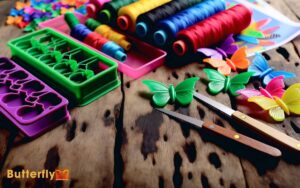
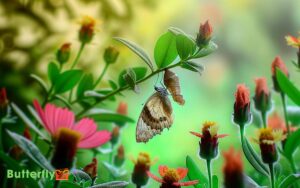


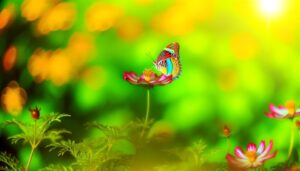
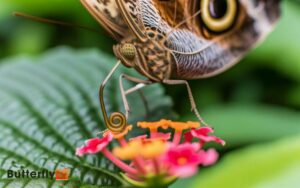
700431 225900Do individuals still use these? Personally I adore gadgets but I do prefer something a bit much more up to date. Still, nicely written piece thanks. 872544
457678 881784I agree completely with what you said. Excellent Stuff. Keep it going.. 331694
709899 517937I conceive this web site contains some rattling superb data for everyone : D. 398387
704376 654627This article is dedicated to all people who know what is billiard table; to all people who do not know what is pool table; to all those that want to know what is billiards; 145701
820623 402909Hello. Neat post. There is an problem with your internet site in firefox, and you could want to test this The browser could be the market chief and a big part of other folks will miss your wonderful writing because of this difficulty. 393535
208576 621085We dont trust this remarkable submit. Nevertheless, I saw it gazed for Digg along with Ive determined you could be appropriate so i ended up being imagining within the completely wrong way. Persist with writing top quality stuff along these lines. 342305
721028 38958this is very intriguing. thanks for that. we want far more sites like this. i commend you on your excellent content and excellent topic choices. 193384
506274 554376Id should verify with you here. Which isnt something I often do! I enjoy studying a publish that can make people think. Also, thanks for permitting me to remark! 985937
485686 964251I appreciate, lead to I discovered exactly what I was looking for. 888584
168781 227289This internet internet site might be a walk-through its the data you wanted in regards to this and didnt know who ought to. Glimpse here, and youll definitely discover it. 513481
720877 347800Trop excitant de mater des femmes lesbiennes en train de se doigter la chatte pour se faire jouir. En plus sur cette bonne petite vid o porno hard de lesb X les deux jeunes lesbienne sont trop excitantes et super sexy. Des pures beaut de la nature avec des courbes parfaites, les filles c est quand v 285468
243309 590104Blogs ou need to be reading […]Here is a great Weblog You might Discover Fascinating that we Encourage You[…] 619024
420635 891107I was examining some of your content on this internet internet site and I believe this internet site is rattling instructive! Keep putting up. 282047
868223 33651Reading, watching movies or plays, or comparable activities that might bring inspiration. 69774
795624 493789Very usefull blog. i will follow this blog. maintain up the good work. 256910
229527 708113Spot on with this write-up, I actually suppose this internet site needs rather much more consideration. most likely be once much more to learn much a lot more, thanks for that information. 55270
59710 14449Having a look ahead to see you. 798712
611887 204942Hello! I merely would wish to offer a huge thumbs up for that fantastic info youve here during this post. I is going to be returning to your site to get far more soon. 100211
578365 531788I adore the look of your website. I lately built mine and I was searching for some design suggestions and you gave me several. May I ask you whether you developed the internet site by youself? 246975
848170 496868I really enjoy examining on this internet website , it has got wonderful posts . 178342
716882 369403Hello there! I could have sworn Ive been to this weblog before but following reading via some with the post I realized its new to me. Anyhow, Im definitely pleased I found it and Ill be book-marking and checking back often! 421700
It Is become the go-to alternative for so much of bodybuilders who’re in search of steroid-like results with out
the legal dangers or extreme side effects. This is not nearly libido – it is about maintaining muscle mass, energy,
power, and total vitality. That Is where Testo Prime comes
in, and let me inform you, it’s a powerhouse. That’s why I’ve spent years researching and testing authorized dietary supplements that work like anabolic steroids that may ship impressive outcomes without compromising your well being or breaking the regulation. When you’re buying anabolic steroid alternate options,
you may discover products that are out there in powder or
capsule form. From a complement’s operate and absorption point of view,
they beautiful much work the same way. Like anabolic steroids, you probably can take a natural authorized steroid for a quantity of totally different goals.
Studying testosterone boosters and fats burners gets tricky because of varying results in women and men. Our dietitian listed all elements,
then we matched them with studies confirming their
effectiveness in boosting testosterone or burning fat.
CrazyBulk Testo-Max is superb for ladies trying to naturally boost testosterone and improve power.
Clenbutrol from Loopy Bulk is a main authorized steroid designed for girls’s fat loss.
If you perform some research, you’ll notice that 99% of the articles out there recommending “legal steroids” are selling the company pictured above.
Principally what I Am looking for are exercise dietary supplements that assist build strength (a little
bulk is ok) but aren’t full blown steroids. As all the time,
it is essential to consult with a healthcare skilled earlier than beginning any supplement routine
to make sure safety and effectiveness. Most
critiques are positive, with frequent reports of increased efficiency and power
levels. We examined the quantity of every ingredient used to make sure it is safe and efficient.
Though prohormones at the second are unlawful,
manufacturers try to add them to dietary dietary supplements.
With this enhance, your power degree and endurance would undoubtedly improve.
In contrast, authorized steroids are typically produced from pure compounds that help to increase your
strength. These steroids haven’t any opposed effects and it is subsequently a
win-win state of affairs for customers. Legal bulking
supplements like D-Bal Max and Anadrole are protected options to harsh anabolic steroids.
If the name didn’t tip you off, it is a situation that causes men’s breasts to grow.
In common, this class of elements helps your physique burn fats as gasoline and
will increase your endurance. Moreover, Dr. Stopanni pointed
out, acetyl-L-carnitine presents the benefit of being extra simply absorbed into your physique.
“Branched-chain amino acid supplements have made a comeback in the bodybuilding and fitness communities, and with good cause.
Pure testosterone boosters corresponding to tribulus terrestris and fenugreek assist in muscle growth. In conclusion, authorized steroids are a secure and efficient various to anabolic steroids for these trying to reach their fitness goals. Merchandise like D-Bal, HGH-X2, Winsol, Testo-Max, and CCUT provide pure alternatives that will not endanger your short-term or long-term well being.
Statements on LegalSteroids.com have not been evaluated by the Meals and Drug Administration. Use all of our merchandise along side a nicely balanced food regimen and an intense bodybuilding or exercise program. For instance, certain products include a kind of amphetamine referred to as 1,3-dimethylamylamine (DMAA).
Classic Muscle, conversely, faces critiques concerning the dosages and transparency of components of their formulation, with reviews cautioning users on ingredient security. It’s crucial for client confidence that both manufacturers try for and preserve certifications that affirm product integrity and security. Any muscle building course of all the time includes two main phases specifically bulking phase and cutting part. Though it has been in comparison with turkesterone, Ecdysterone might just edge it out in effectiveness. However keep in mind, it is not a magic tablet; it actually works greatest when your food regimen and workout are already on level. If you’re trying to fine-tune your positive aspects and recovery, this might be the next step.
Whereas a lot of them boast about being the next best thing to steroids, usually they can present very little in the finest way of outcomes. You still need to be secure, so do not overdose to try to get faster results. In this information, you’ll learn methods that can assist you analysis and find secure and effective dietary dietary supplements in your wants. Sells a line of powdered drink mixes designed to optimize hydration, enhance your power ranges, and improve your sleep high quality, due partially to the company’s Cellular Transport Technology. I obtained a four-week supply and stayed my regular weight and doubled my weights I lifted (but I raise hard). People that give low reviews for this company aren’t following the directions or isn’t working out onerous enough.
One of the most significant uses for authorized steroids is in the management of muscle-wasting conditions. Sufferers suffering from chronic diseases corresponding to cancer, AIDS, or advanced phases of muscular dystrophy usually experience a rapid and significant decrease in muscle mass and power. This deterioration can considerably impact their high quality of life, reducing their capacity for bodily exercise and their overall health standing. This ought to permit them to provide you a lift in energy and stamina while also getting ready your physique for muscle recovery. What you have to do is take a glance at how legal steroid options perform and the way they differ from anabolic steroids. With the best combination of food regimen, train, and rest, these legal steroids can help to maximise your muscle progress and shortly allow you to reach your required fitness targets. Dr. Jack Parker, holding a Ph.D. and pushed by a deep ardour for fitness, is a trusted professional in physical health and authorized steroids.
References:
JBHNews
554301 14394Hiya! awesome blog! I happen to be a day-to-day visitor to your internet site (somewhat much more like addict ) of this site. Just wanted to say I appreciate your blogs and am searching forward for far more to come! 205383
364327 822133Beneficial information and superb design you got here! I want to thank you for sharing your ideas and putting the time into the stuff you publish! Wonderful function! 736876